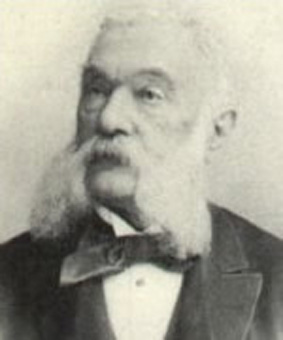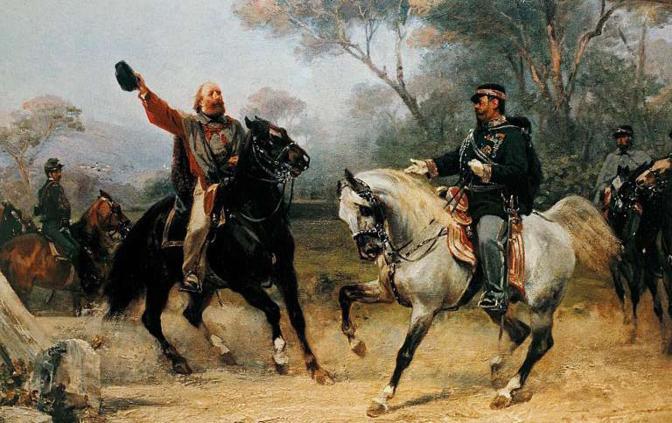Today it's exactly 30 years since I conscientiously opted for history among several other disciplines; and 10 years since I conscientiously baked a decent panettone. So I would like to dedicate this post to both, featuring a late 19th century Italian recipe.
Italian gastronomy
Food connoisseurs are obviously acquainted with the name of Pellegrino Artusi, the Italian businessman who self-published his culinary guide in 1891: La scienza in cucina e l'arte di mangiar bene consists of 790 recipes, garnished with fascinating stories from the author's life. Artusi was born in a small town of Emilia-Romagna and moved to Tuscany at the age of 32 so most of the featured dishes originate in those regions. But since he was a curious man and proud to be Italian, he also included recipes from places that he visited at home & abroad. A highly entertaining read, the book sold thousands of copies during Artusi's lifetime and is still popular today. It was the first Italian cookbook: two decades after the unification of Italy, the 71-year-old gourmet compared the food of different regions, arguing that some Italians were better cooks than others while every Italian cooked better than a foreigner.
 |
| Pellegrino Artusi in 1891 |
 |
| Victor Emmanuel meets Garibaldi (de Albertis, c. 1870) |
The art of eating well
Refusing to be labelled a glutton, the Italian bon-viveur was strict on his potential critics. He was the enemy of those who obsessed with intellectual tasks denouncing life's simple pleasures and he believed that good health resulted from a balanced diet, which highbrows rarely followed. On the other hand, Artusi was very considerate towards potential friends. He dedicated La scienza in cucina e l'arte di mangiar bene to housewives, inviting them to experiment with recipes that he described as low-budget, savory & wholesome. According to the usage of his time, he failed to give detailed hints about ingredients or method but his directions are easy to follow if know how to cook and his nutrition tips quite helpful.
'Cherchez la femme'
As he remained a bachelor throughout his life, many -if not all- of Artusi's dinners were prepared by his excellent cook Marietta. His gratitude was such that he named a panettone after her. (Their names were also given to modern-day awards for non-professional cooks as well as people who occupy themselves with the research & protection of traditional Italian recipes.) 'Panettone Marietta' was made with cream of tartar instead of baker's yeast, and tasted far better -in Artusi's opinion- than commercialized panettone from Milan. The following recipe is a yeasted version of Marietta's fruit cake, using exactly the same ingredients.
 |
| leavened with baking powder (original recipe) |
 |
| leavened with baker's yeast (adapted recipe) |
'PANETTONE MARIETTA'
Panettone dough is typically made with a starter, which I omit. The butter is also kneaded in little by little, or else it may be difficult to incorporate. If you don't feel confident enough to knead all the ingredients together, please use the classic recipe for yeasted panettone. Or, better still, try Marietta's original recipe, which is leavened with baking powder.
I n g r e d i e n t s
300-350g strong flour (Flour Type 1050)
1 1/2tsp dried yeast
a pinch of salt
1tbsp lemon zest
100g butter
80g caster sugar
1 egg
2 yolks
200ml milk
8og candied fruit peel
80g raisins
M e t h o d
1. Gently heat the butter, sugar and milk in a saucepan. Add the egg and 1 yolk, lightly beaten. The mixture should be lukewarm (about 37-38C). 2. Sift the flour, salt and yeast in a bowl, then add the lemon zest. Blend the 2 mixtures with a spoon. Cover and leave for 15-30 minutes. 3. Knead for 10-15 minutes, shape into a ball and place in a lightly greased bowl. Cover with a towel and leave to rise until doubled in bulk (about 2 hours). 4. Punch down, mix with the sultana raisins and candied fruit peel and leave to rise a second time, until almost doubled in bulk (about 1 hour). 5. Knead lightly for 1-2 minutes, shape into 12 buns and transfer to a muffin pan. Cover with a towel and leave to rise for 30 minutes. Meanwhile set the oven to 180 C. 6. Brush the top with the remaining yolk, thinned with 1tbsp milk. Bake for 30 minutes, remove from the pan, and continue baking for another 10 minutes. Check by knocking the bottom; there must be a hollow sound. (Alternatively, shape the dough into a ball. Place in the specially designed round baking tin, lined with parchment paper that you will crop at least 15cm above the dough. Preheat the oven to 190C. Bake for 20 minutes, lower the temperature to 180C, remove from the pan, and continue baking for another 30 minutes. If the oven is not hot enough, your panettone will be underbaked. 7. Leave to cool on a wire rack.
Comments